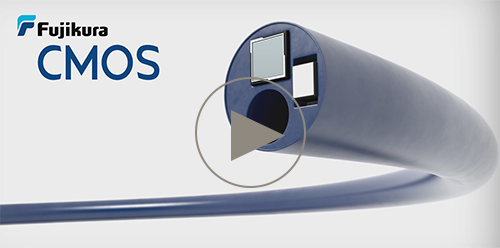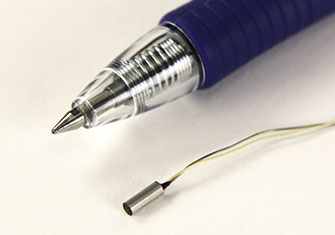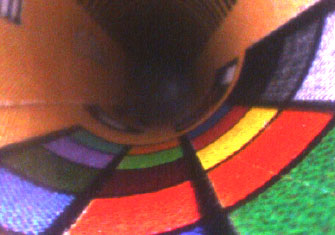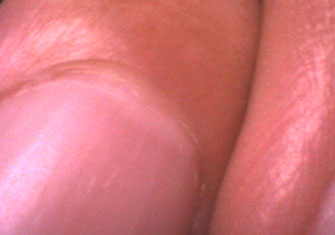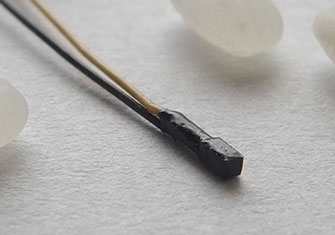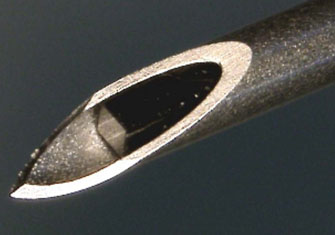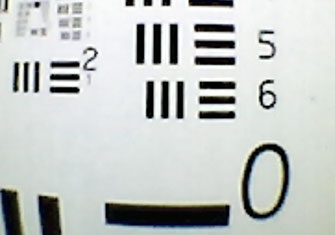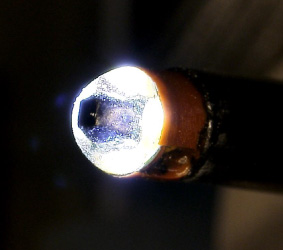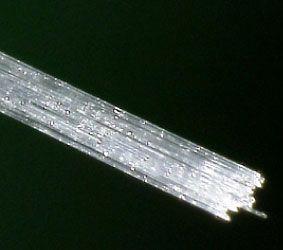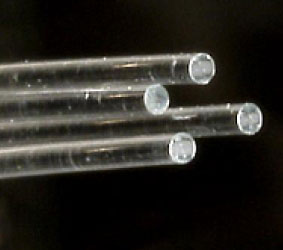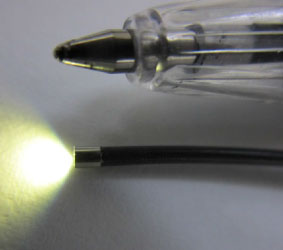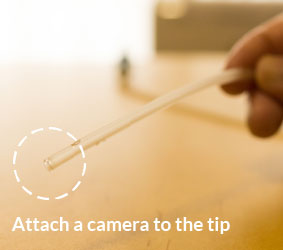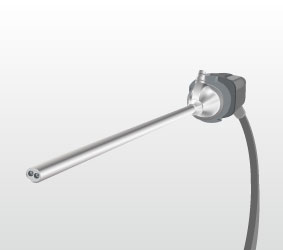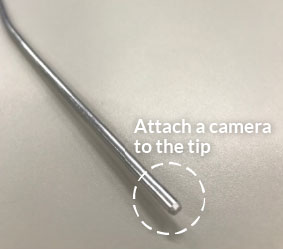CONCEPT
The concept of PICORAMEDIC is to combine Pico, which means extremely thin,
and Paramedic, which is an emergency medical technician who assists medical specialists.
Its ultra-thin medical camera modules reveal the previously unseen inside of the body,
thereby contributing to the improvement of medical technology and safety improvement.
PRODUCT
The PICORAMEDIC products come in two types: a 1.6 mm diameter camera module with a 160,000 pixel resolution (160k CMOS image sensor module) and a 0.65 mm square camera module with a 40,000 pixel resolution (40k CMOS image sensor module). These can be selected depending on the specific area of the body and allow medical devices to become thinner. This helps develop minimally invasive devices and leads to improving the QOL of patients, shortening their length of stay in hospital, reducing medical expenses, etc.
According to customers' needs, we also offer scope products which are made by adding a lighting function to the camera module.
The PICORAMEDIC products are designed and manufactured in accordance with a quality system which complies with ISO 13485 in order to ensure stable supply with high product quality.
160k CMOS Image Sensor Module
The 160k CMOS image sensor module has a thin end with a diameter of 1.6 mm and captures high-resolution images at a resolution of 160,000 pixels, making it suitable for use in medical endoscopes with a small diameter.
| End diameter* | φ1.6 mm |
|---|---|
| Hard part length | 5 mm |
| Pixel count | 160,000 pixels |
| Angle of view | 90° |
| Depth of field | 3~50 mm |
| Harness length | 2 m (standard) |
| * Adjustable to φ1.5 mm by removing the SUS sleeve. | |
40k CMOS Image Sensor Module (under development)Scheduled for release in 2019
The 40k CMOS image sensor module has an ultra-thin end with a 0.65 × 0.65 mm square shape and captures high-resolution images at a resolution of 40,000 pixels, making it suitable for use in medical disposable endoscopes with a small diameter and imaging catheters.
| End diameter* | 0.65 × 0.65 mm square shape |
|---|---|
| Hard part length | 3.7 mm |
| Pixel count | 40,000 pixels |
| Angle of view | 120° |
| Depth of field | 3~50 mm |
| Harness length | 2 m (standard) |
Scope Products
According to customers’ needs, we also offer a variety of scope products which combine our CMOS image sensor module with a light source, such as an LED, glass fiber for lighting, or plastic fiber for lighting.
| Sample scope | End diameter | Lighting |
|---|---|---|
| 160k pixel scope | 1.98 mm | Glass fiber |
| 40k pixel scope | 1.3 mm | Glass fiber |
MODULE
The PICORAMEDIC product consists mainly of a lens, an image sensor chip, a harness, and a connector.
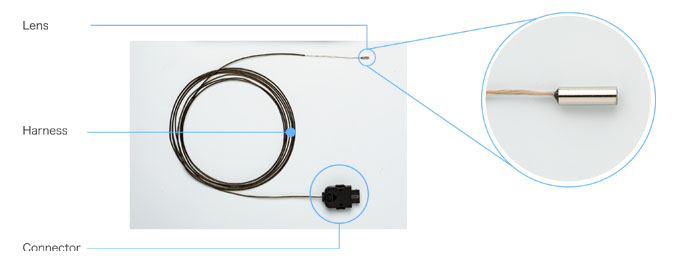
| Lens | Image sensor | Harness | Connector | |
| 160k | Hybrid lens | 400 × 400 = 160,000 pixels | 42 AWG coaxial cable | Small plagable / FPC |
| 40k | WLO lens | 200 × 200 = 40,000 pixels | 46 AWG coaxial cable | Small plagable / PCB |
Lens
Hybrid lens: A low-priced lens made of a combination of glass and plastic.
WLO (Wafer Level Optics): Lenses are combined in the form of a wafer and then subjected to dicing; this allows low-cost manufacturing and packaging of compound lenses.
Harness
The use of a thin coaxial cable allows the transmission of image data with less noise.
The outermost layer is shielded, offering high resistance to external noise.
Connector
To facilitate evaluation, we provide a small pluggable connector which supports evaluation boards. An FPC version is also available, which takes usability into account making it possible to insert into a tube from the connector side.
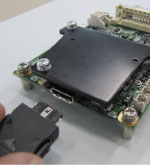
Pluggable connector
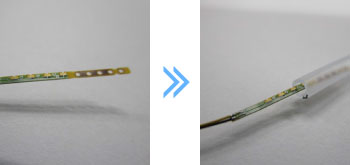
FPC: Inserted into the tube from the connector side, not from the front end as with the image sensor.
Test Environment
Evaluation Board
An evaluation board is available to evaluate PICORAMEDIC products. Software can be downloaded from a special URL. Please contact us for more information.
Evaluation board connection example
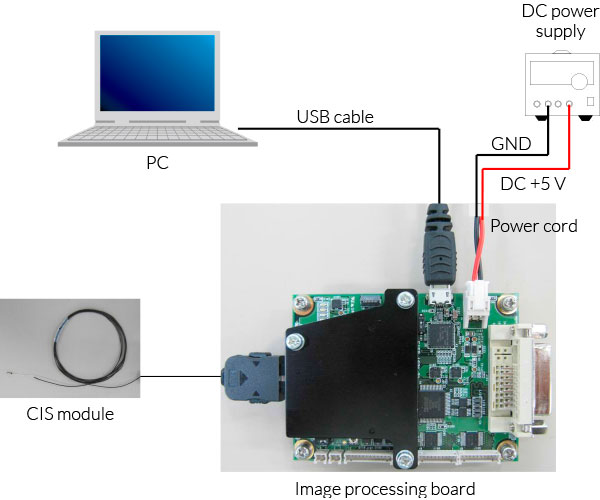
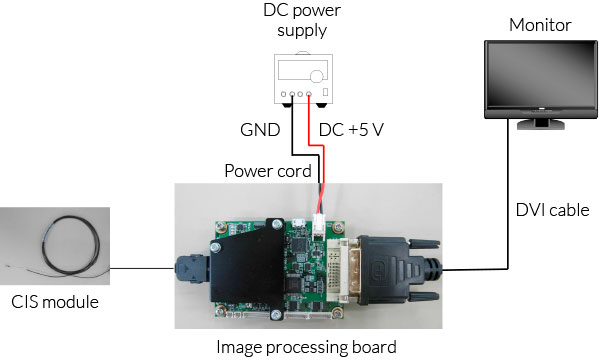
APPLICATION
The PICORAMEDIC products are so thin that many different areas in the body can be visualized.
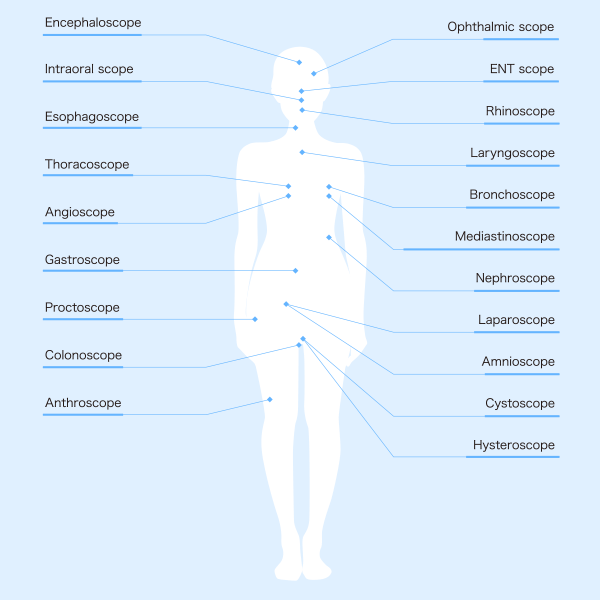
Applications
The PICORAMEDIC products can be attached to a catheter, a stylet,
or other instrument as an ultra-thin camera module to allow the insertion of a tube, etc. while maintaining a state of vision.
In the future, we expect them to find more applications based on their thinness,
such as three-dimensional endoscopy using two camera modules and integration into surgical robots.

